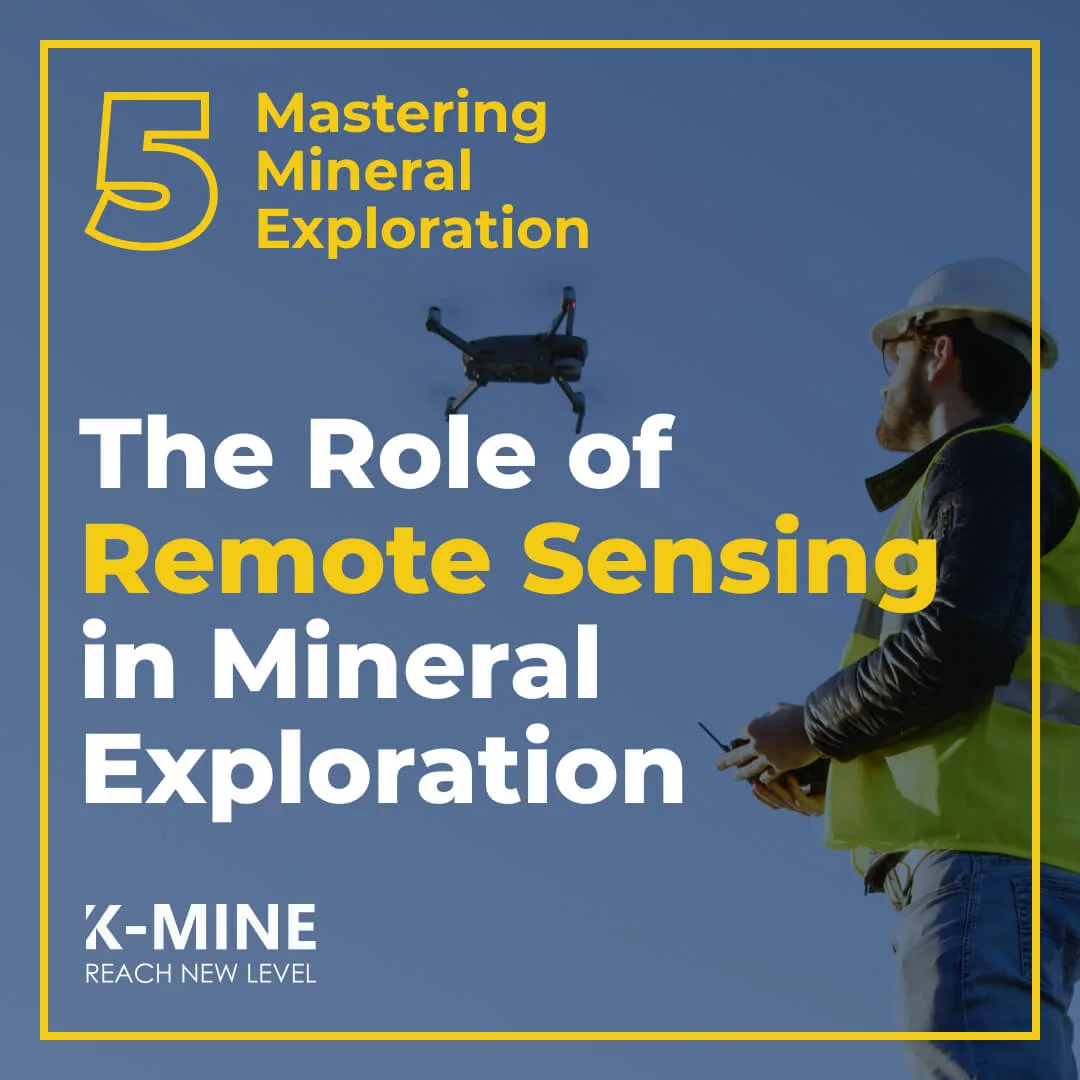
Content
- What is Remote Sensing?
- Types of Remote Sensing Techniques
- Satellite Imagery in Mineral Exploration
- Hyperspectral Imaging
- LiDAR in Mineral Exploration
- Integration with Geographic Information Systems (GIS)
- Challenges and Limitations of Remote Sensing
- The Future of Remote Sensing in Mineral Exploration
- Conclusion
In mineral exploration, the ability to efficiently gather and analyze information on vast, often remote, and geologically complex areas is invaluable. Remote sensing emerges as an indispensable tool that offers just that. Tracing its roots back to early aerial photography, remote sensing has evolved exponentially. The technology has grown from the rudimentary black-and-white photographs taken from planes in the mid-20th century to the advanced satellite platforms and sensors we have today.
Remote sensing facilitates the acquisition of information about the Earth’s surface without making physical contact. Through various sensors and platforms, remote sensing applications in mineral exploration capture data across different parts of the electromagnetic spectrum. This data is invaluable for identifying geological features that might be indicative of mineral deposits. From the spectral signatures of rocks and minerals to the topographical features that reveal geological structures, remote sensing data gives exploration teams a wealth of information. This information is essential for making informed decisions in the early stages of exploration, thus streamlining the process and improving the odds of success.
As we move forward, we will delve into the intricacies of remote sensing techniques, their applications, and how they fit into the broader context of mineral exploration.
What is Remote Sensing?
Remote sensing, in the context of geology and mineral exploration, refers to the acquisition and analysis of data about the Earth’s surface and subsurface without being in direct contact with them. Essentially, it involves collecting information from a distance, typically using aerial or satellite-based sensors.
The basic principle behind remote sensing is the detection and measurement of electromagnetic radiation (EMR) that is either emitted or reflected by the Earth’s surface. Various objects on the Earth’s surface, including rocks and minerals, interact with electromagnetic radiation in different ways. These interactions depend on the properties of the materials, such as their composition and structure.
In mineral exploration, remote sensing aims to detect anomalies or patterns that may indicate the presence of mineral deposits. This is achieved through the analysis of spectral signatures – the patterns of reflection or absorption of different wavelengths of light by materials. For instance, certain minerals will reflect specific wavelengths of light more strongly than others. By analyzing these spectral signatures, it is possible to make inferences about the composition and characteristics of the surface and near-surface materials in a particular area.
Remote sensing offers numerous advantages, such as the ability to cover large areas in a relatively short amount of time, providing a synoptic view, and the capability to access remote or inaccessible regions. Moreover, as remote sensing technology continues to evolve, the resolution and breadth of data that can be obtained are continually improving, making this technique even more invaluable in modern mineral exploration.
Types of Remote Sensing Techniques
In mineral exploration, various remote sensing techniques are employed to gather information regarding the surface and near-surface geology. These techniques provide diverse sets of data that are crucial in the identification and assessment of mineral deposits. Let’s explore some of the common remote sensing techniques utilized in mineral exploration:
- Satellite Imagery: One of the most widely used techniques, satellite imagery involves the use of satellites to capture images of the Earth’s surface. These images can be used to identify geological features such as rock types, structures, and alterations that may indicate the presence of mineralization.
- Aerial Photography: Though somewhat similar to satellite imagery, aerial photography involves taking high-resolution photographs from aircraft. This technique is particularly useful for creating detailed maps and detecting specific geological features that might be indicative of mineral deposits.
- Hyperspectral Imaging: Hyperspectral imaging involves capturing and analyzing a wide range of electromagnetic spectra. This technique is incredibly detailed, often involving hundreds or thousands of bands. Hyperspectral imaging is especially useful in detecting specific minerals based on their spectral signatures.
- LiDAR (Light Detection and Ranging): LiDAR involves sending a pulsed laser light towards the Earth’s surface from an aircraft or satellite and measuring the reflected pulses with a sensor. Differences in laser return times and wavelengths can then be used to make digital 3-D representations of the surface. In mineral exploration, LiDAR can be used for creating high-resolution digital elevation models, which are beneficial in understanding the terrain and associated geological features.
- Radar Imaging: Radar imaging involves emitting radio waves and measuring their reflection from the Earth’s surface. This technique is effective in mapping surface topography and can be used in any weather conditions, day or night.
- Thermal Infrared Imaging: This technique involves the measurement of infrared radiation (heat) emitted from the Earth’s surface. It is especially useful in identifying variations in temperature, which can be indicative of certain geological features or mineralization processes.
Each of these remote sensing techniques offers unique insights into the geology of an area and can be invaluable in guiding the mineral exploration process. Often, a combination of techniques is used to provide a more comprehensive understanding of the target area.
Satellite Imagery in Mineral Exploration
Satellite imagery is a powerful tool in mineral exploration. With advancements in satellite technology, we are now able to obtain high-resolution images that can be instrumental in the identification of geological features associated with mineral deposits. Let’s delve into the types and applications of satellite imagery in mineral exploration:
- Multispectral Imagery: This involves capturing images at specific wavelengths of the electromagnetic spectrum. Traditional multispectral imagery usually contains a few (typically 3-10) discrete bands. The Landsat series of satellites, for instance, has been invaluable for multispectral imaging. In mineral exploration, multispectral imagery is used for mapping large-scale geological features such as lithological units, structural features, and vegetative cover.
- Hyperspectral Imagery: Unlike multispectral, hyperspectral imagery divides the spectrum into many more bands (often hundreds or thousands). This higher resolution enables the detection of the specific spectral signatures of minerals. In mineral exploration, hyperspectral imagery is particularly useful for identifying alteration zones associated with mineral deposits.
Applications:
- Lithological Mapping: Different rock types have unique spectral signatures. Satellite imagery can be used to identify and map different lithologies over a large area. This information can be vital in targeting prospective areas for mineral exploration.
- Structural Mapping: The identification of geological structures such as faults and folds is crucial in mineral exploration, as these often control the emplacement of mineral deposits. Satellite imagery can be used to map these structures over large areas.
- Alteration Zone Mapping: Many mineral deposits are associated with zones of altered rock. Using hyperspectral imagery, it is possible to map the distribution of alteration minerals and use this information to target mineral exploration efforts.
- Vegetation Anomalies: In some cases, the presence of minerals can affect the type of vegetation that grows in an area. By analyzing the spectral characteristics of vegetation from satellite imagery, it is possible to identify areas where the vegetation may have been affected by mineralization.
The integration of satellite imagery into the mineral exploration process is an invaluable asset, particularly in the early stages of exploration. It enables geologists to analyze vast areas quickly, efficiently, and cost-effectively, honing in on prospective regions for more detailed investigation.
Hyperspectral Imaging
Hyperspectral imaging is a prominent remote sensing technique that captures and analyzes a wide range of electromagnetic spectrum. It is sometimes referred to as imaging spectroscopy because it collects information across hundreds or even thousands of narrow, adjacent spectral bands. This creates a continuous spectrum for each pixel in the image, which can be used to identify subtle variations in the composition of materials.
For geologists, hyperspectral imaging holds immense value in mineral exploration:
- Identifying Mineral Compositions: Hyperspectral imaging allows us to detect the distinct spectral signatures of different minerals. This is especially crucial for minerals that may not be visible or distinguishable to the naked eye. By analyzing hyperspectral data, geologists can not only detect the presence of specific minerals but also estimate their abundances.
- Mapping Alteration Patterns: Mineral deposits are often associated with patterns of alteration, where the original minerals within rocks are altered to new minerals due to hydrothermal activity. These altered minerals often have unique spectral signatures that can be identified through hyperspectral imaging. Mapping these patterns can provide vital clues to the locations of mineral deposits.
- Environmental Monitoring: Besides direct mineral exploration, hyperspectral imaging can be used for environmental monitoring in mining areas. For example, it can be used to monitor the dispersion of pollutants or the success of rehabilitation efforts.
- Customization of Wavelength Ranges: Hyperspectral imaging allows geologists to focus on specific wavelengths where certain minerals have distinctive signatures. This customization enhances the precision of mineral detection and identification.
- Integration with Geological Models: Hyperspectral datasets can be integrated with other geological information to create more comprehensive models of the subsurface. This is particularly important for targeting exploration efforts and optimizing the extraction of mineral resources.
- Risk Reduction: By providing detailed information on mineral compositions and patterns, hyperspectral imaging allows for more informed decision-making, which can reduce the risks associated with mineral exploration.
In sum, hyperspectral imaging is an invaluable tool for mineral exploration. Its capacity to detect and analyze minute differences in the electromagnetic spectrum makes it a powerful technique for identifying and mapping mineral compositions and alteration patterns associated with mineral deposits. Through the integration of hyperspectral data with other geological information, geologists can make more informed decisions and enhance the efficiency and effectiveness of mineral exploration campaigns.
LiDAR in Mineral Exploration
Light Detection and Ranging, or LiDAR, is an advanced remote sensing technique that utilizes pulses of laser light to measure distances between the sensor and the Earth’s surface. These measurements can then be used to create highly accurate and detailed three-dimensional representations of the landscape, known as Digital Elevation Models (DEMs).
In mineral exploration, LiDAR holds particular significance for the following reasons:
- High-Resolution Topographic Data: LiDAR systems can capture an immense amount of data in a short period, leading to the creation of highly detailed and accurate topographic maps. These maps are critical for understanding the surface features and geomorphology of an exploration area.
- Vegetation Penetration: One of the significant advantages of LiDAR is its ability to penetrate through vegetation. Unlike conventional aerial imagery, which can be obscured by dense foliage, LiDAR can provide information on the ground’s surface even in heavily forested areas. This is particularly beneficial in mineral exploration in regions with thick vegetation cover.
- Structural Analysis: LiDAR-derived DEMs allow geologists to analyze surface structures that might be indicative of subsurface mineral deposits. The identification of features such as fault lines, folds, and changes in rock patterns can be crucial in determining the locations for further exploration efforts.
- Accessibility and Logistics Planning: Detailed topographic data obtained from LiDAR can aid in planning access routes, positioning drilling rigs, and other logistics necessary for an exploration campaign. Knowing the exact terrain specifications can save time and resources.
- Monitoring and Environmental Management: LiDAR can also play a critical role in environmental management and monitoring. By providing a detailed and accurate representation of the landscape before, during, and after mineral exploration, LiDAR can help assess the environmental impact and support restoration efforts.
- Integration with Geological Data: Combining LiDAR data with other geological data such as geological maps, geochemical data, and geophysical data creates a more comprehensive and accurate geological model. This integrated approach can significantly enhance the success of mineral exploration endeavors.
- Enhanced Safety: LiDAR can be used to monitor and predict natural hazards such as landslides in mining areas, thus contributing to the safety of the operations.
In conclusion, LiDAR is a powerful tool in mineral exploration that offers a range of benefits, including high-resolution topographic mapping, structural analysis, logistics planning, environmental monitoring, and safety enhancement. By integrating LiDAR data with other geological information, mineral exploration can be conducted more efficiently and effectively.
Integration with Geographic Information Systems (GIS)
Geographic Information Systems (GIS) have emerged as a vital tool for integrating, managing, analyzing, and visualizing geospatial data in mineral exploration. When remote sensing data is combined with GIS, it significantly enhances the ability to perform spatial analysis and create comprehensive models of the exploration area.
Here’s how remote sensing data and GIS are integrated for more effective mineral exploration:
- Data Management: Remote sensing generates a vast amount of geospatial data. GIS serves as a repository where all this data can be stored, organized, and managed effectively. The data can include satellite imagery, LiDAR datasets, aerial photographs, geological maps, and more.
- Data Analysis: Through GIS, geologists can conduct a range of spatial analyses with remote sensing data. For example, layers of satellite imagery can be overlaid with geological maps to identify correlations between surface features and known geological formations. Buffer zones, spatial queries, and statistical analyses can be performed to understand the distribution and concentration of minerals.
- 3D Modeling: GIS technology allows for the creation of three-dimensional models of the terrain based on remote sensing data. These 3D models can provide geologists with a more accurate and detailed understanding of the subsurface geology, which is crucial for identifying potential mineral deposits.
- Visual Representation: One of the strengths of GIS is its ability to visualize data in a meaningful way. By combining remote sensing data, geologists can create maps and models that visually represent the geology of an area, making it easier to communicate findings and analyze patterns.
- Decision Support: GIS can serve as a decision support tool by helping geologists make informed decisions regarding where to conduct exploration activities. By analyzing remote sensing data within a GIS, geologists can identify areas that are most likely to contain mineral deposits, optimizing resource allocation and exploration strategies.
- Environmental Monitoring: Integration with GIS allows remote sensing data to be used for monitoring environmental changes over time. This is essential for assessing the impact of exploration activities on the environment and ensuring compliance with environmental regulations.
- Exploration Planning: GIS, with remote sensing data, can be invaluable in planning exploration activities. It can be used to determine the best locations for drilling, assess access routes, and consider environmental constraints.
In summary, the integration of remote sensing data with Geographic Information Systems enhances the capacity of geologists to analyze and interpret spatial data, create detailed geological models, make informed decisions, and plan exploration activities more efficiently. This integration is pivotal in harnessing the full potential of remote sensing in mineral exploration.
Challenges and Limitations of Remote Sensing
While remote sensing is a powerful tool in mineral exploration, it comes with its set of challenges and limitations. As a geologist, it’s imperative to recognize these factors to maximize the utility of remote sensing while being aware of its constraints. Below are some common challenges and limitations:
- Cloud Cover and Atmospheric Conditions: Satellite-based sensors are particularly susceptible to interference from cloud cover and atmospheric conditions. Clouds can obscure the Earth’s surface, making it difficult to obtain clear images. Correcting atmospheric distortions can be complex and might not always produce desired results.
- Spatial and Temporal Resolution: The usefulness of satellite imagery can be constrained by its spatial and temporal resolution. High spatial resolution is required for detailed analysis, but such data might not always be available or could be prohibitively expensive. Additionally, the frequency at which satellites capture images might not be sufficient for monitoring rapid changes.
- Spectral Limitations: The ability to detect certain minerals is dependent on the spectral range and resolution of the sensors. Not all sensors are capable of detecting the spectral signatures of specific minerals, which can limit the range of applications for certain remote sensing techniques.
- Data Volume and Processing: Remote sensing, especially hyperspectral imaging, generates a massive volume of data. Managing, processing, and interpreting this data require substantial computing resources and expertise. Ensuring the data quality and extracting meaningful information can be a challenging task.
- Surface Limitations: Remote sensing primarily provides information about the Earth’s surface. For mineral exploration, understanding subsurface geology is crucial. Remote sensing data needs to be supplemented with other data sources such as geophysics and drilling to gain insights into the subsurface.
- Cost: Advanced remote sensing technologies such as LiDAR and high-resolution satellite imagery can be costly. Small to medium-sized exploration companies may find it difficult to allocate sufficient budget for extensive remote sensing campaigns.
- Environmental Factors: In some cases, the presence of vegetation, snow, or human-made structures can obscure the geological features of interest, limiting the effectiveness of remote sensing.
- Legal and Regulatory Issues: In some regions, there may be legal restrictions on the use of remote sensing data, especially high-resolution satellite imagery, due to concerns related to national security or privacy.
Understanding these challenges and limitations is essential for geologists to effectively employ remote sensing in mineral exploration. Integrating remote sensing with complementary data sources and technologies and developing innovative solutions to overcome these challenges are necessary for unlocking its full potential.
The Future of Remote Sensing in Mineral Exploration
The field of remote sensing is rapidly evolving, and its application in mineral exploration is poised to undergo transformative changes. As an experienced geologist, I am enthusiastic about the prospects of integrating emerging trends in remote sensing with traditional exploration methods to enhance mineral discovery and analysis. Let’s delve into some of the emerging trends and future prospects:
- Higher Resolution Satellite Sensors: Advances in satellite technology are leading to the deployment of sensors with even higher spatial, spectral, and temporal resolutions. These sensors can capture more detailed images with a broader range of spectral bands, allowing geologists to detect more subtle geological features and mineral signatures.
- Miniaturization and Cost Reduction: The miniaturization of satellite technology and the rise of small satellite constellations will make satellite imagery more accessible and cost-effective. This will empower even small exploration companies to harness the power of satellite remote sensing.
- Advanced Data Processing and Machine Learning: The integration of machine learning algorithms and artificial intelligence with remote sensing data processing is a game-changer. These technologies can be used to automate the analysis of large datasets, detect patterns, and predict the likelihood of mineral deposits with higher accuracy.
- Integration with Other Geospatial Data: The future of remote sensing lies in its integration with other geospatial datasets. Combining remote sensing with geophysical, geochemical, and geological data within advanced Geographic Information Systems (GIS) can provide a more comprehensive understanding of the Earth’s subsurface.
- Hyperspectral Imaging for Detailed Mineral Analysis: Hyperspectral imaging will become even more advanced, allowing for the detailed analysis of mineral compositions over large areas. This can be particularly useful in the early stages of exploration to identify promising areas for more focused investigation.
- Real-time and Near-real-time Data Analysis: Advances in data transmission and processing speeds are making it possible to analyze remote sensing data in real-time or near-real-time. This capability can enhance the efficiency of mineral exploration by providing immediate feedback to geologists on the ground.
- Drones and UAVs for Remote Sensing: The use of drones and Unmanned Aerial Vehicles (UAVs) for remote sensing is expected to increase. These platforms can be equipped with sensors such as LiDAR and hyperspectral cameras to perform high-resolution, localized remote sensing tasks that complement broader satellite studies.
- Automated Mineral Exploration: In the future, we could see a more automated approach to mineral exploration, where remote sensing data is collected and analyzed by AI systems, which then guide exploration efforts with minimal human intervention.
As we move into this exciting future, it is essential for geologists and mineral exploration companies to stay abreast of the latest developments in remote sensing and consider how these technologies can be integrated into their exploration strategies to improve outcomes. The role of remote sensing in mineral exploration is likely to become even more critical as we seek to meet the world’s growing demand for minerals in the most efficient and sustainable way possible.
Conclusion
In conclusion, remote sensing has become an indispensable tool in modern mineral exploration. Throughout this article, we have examined the essence of remote sensing and its contribution to the geologist’s toolkit. Remote sensing, fundamentally, involves acquiring information about the Earth’s surface without making direct contact, and its applications in mineral exploration are vast.
We delved into various types of remote sensing techniques such as satellite imagery, hyperspectral imaging, and LiDAR, each having its own set of applications and advantages. Satellite imagery, particularly hyperspectral imaging, has the capacity to detect mineral compositions and patterns that are not visible to the naked eye, making it extremely valuable in identifying potential mineral deposits. LiDAR, on the other hand, is instrumental in creating high-resolution digital elevation models, which are essential for geological analysis.
The integration of remote sensing data with Geographic Information Systems (GIS) has opened new avenues for spatial analysis and modeling, greatly assisting in decision-making and planning of exploration activities. However, like any technology, remote sensing has its set of challenges and limitations, such as cloud cover affecting satellite imagery or the costs associated with certain technologies.
Looking forward, the future of remote sensing in mineral exploration is bright with emerging trends such as higher resolution sensors, advanced data processing through machine learning, and integration with other geospatial data. These advancements are set to revolutionize how geologists approach mineral exploration.
As experienced geologists, it is imperative to recognize the value that remote sensing adds to our work. Its ability to provide critical information efficiently and non-invasively makes it an invaluable asset in the quest to uncover new mineral resources.
Stay tuned for the next article in this series, where we will shift our focus to the critical role of drilling techniques in mineral exploration, unraveling how it complements the data collected through remote sensing and other geoscientific methods to paint a complete picture of the subsurface.



 Back
Back